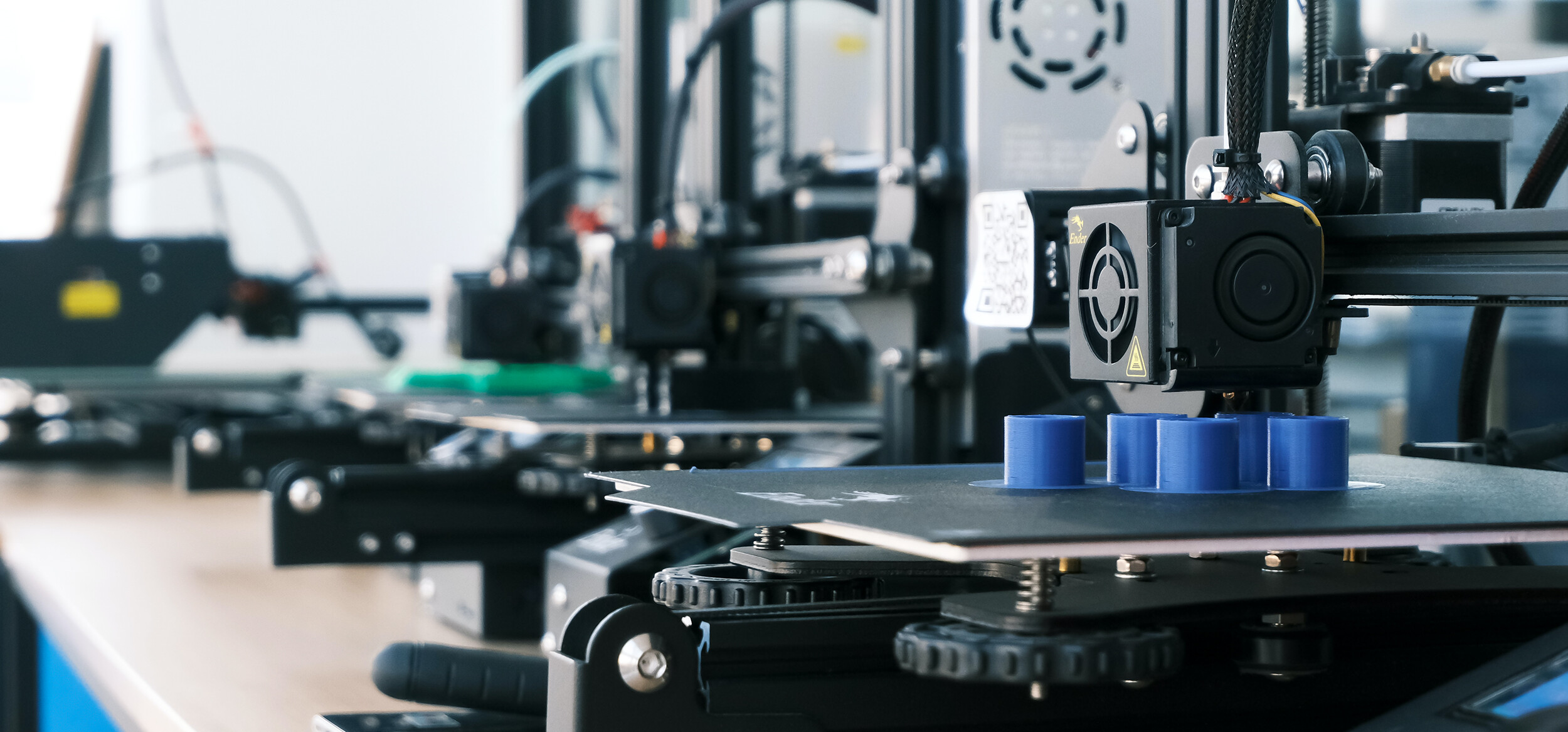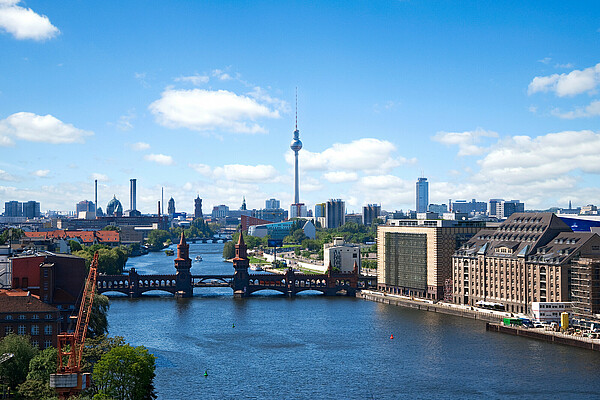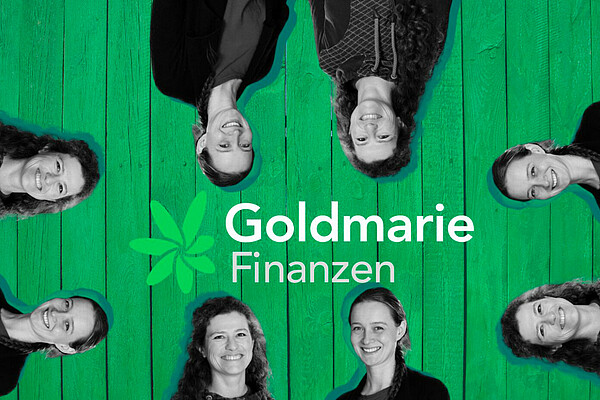The Future Out Of The Machine
Printing the world – 3D additive manufacturing technology in Berlin.
You might not think of Berlin as being caught between the depths of the ocean and the surface of the moon. But two non-European entrepreneurs with big dreams chose Berlin to pursue their visions of the future of additive manufacturing. One of them is working with moondust while the other is developing materials to be used deep under water. One is from India, the other from Canada. Why did they locate their companies in Berlin?
Adam Rumjahn is from Calgary, in the English-speaking part of Canada. After working in French-speaking Montreal and Spanish-speaking Colombia, he decided to found his company Orion Additive Manufacturing in Berlin. His reason: the network of experts in this sector. As Adam puts it, “I really enjoy meeting so many inspiring people in Berlin who are very knowledgeable in my fields of research. I haven't experienced this kind of environment anywhere else.”
Siddharth Tiwari studied in Mumbai and Milan before moving to Berlin in 2013. He says of the German capital, “We have the very best conditions here. We benefit from industry networks such as the Innovation Network for Advanced Materials and the excellent work of Berlin Partner and EEN with their numerous offerings. We find the specialized staff we need thanks to Berlin's universities. And our location in the Adlershof Technology Park [see our article here] suits our business orientation perfectly.”
One Kilogram – One Million Euro
It currently costs approximately €1 M to transport a kilo of building material to the moon. Assuming humans go there again, and maybe decide to stay in a station or settlement, these intrepid explorers will need to build stuff.
With this simple argument, Siddharth Tiwari, who had studied mechanical and aerospace engineering, convinced the startup incubator of the European Space Agency “ESA BIC” to take him on for two years. For his application, Siddarth received help from Berlin Partner and the Enterprise Europe Network Berlin-Brandenburg EEN, which advises and supports companies in developing technology, innovation processes, and a competitive business model so that they gain a foothold in international markets.
After the ESA program, in 2019 Siddarth founded TIWARI Scientific Instruments (TSI) in Berlin. One of his company’s aims is to build the necessities of habitation on the moon with 3D printing, using the materials available there in abundance, i.e. resolith, or lunar dust.
Meanwhile on Earth, Tiwari has successfully developed and commercialized 3D printing tech for the manufacture of high-density metals and ceramics with the method of fused filament fabrication (FFF) for cost-efficient production of parts. With a relatively low level of investment, SMEs can integrate 3D printing in their manufacturing chain.
From Moondust To Deep Sea
Adam Rumjahn’s Orion AM is another EEN success story. Adam is an entrepreneur through and through. He started his first company while still in high school. While the deep sea project to print camera housings that will withstand the water pressure at depth may be one of the most spectacular, Orion’s business focus is on medical devices. Their technology combines FFF with thermal radiation heating to produce patient-specific implants, surgical instruments and more.
Another sector Orion addresses is the production of flight-ready aerospace components. The parts that come out of Orion’s advanced 3D printer for industrial additive manufacturing – designed, engineered and manufactured in Germany – are just as strong as injection molded.
Like Tiwari, Orion doesn’t just sell printers or merely offer a printing service. Consultancy and integration into manufacturing processes is available.
Adam and Siddharth are two visionaries who see their big dreams taking shape layer by layer in Berlin.
Regional Benefits
Thanks to the large communities of experts in various fields and the very high research density, Berlin and the Berlin-Brandenburg region as a whole make an important contribution to the development of innovative materials which impact various industries. Such developments are not only good for business but could be crucial to the success of reaching European sustainability goals. The region is home to institutions and companies concerned with all aspects of additive manufacturing, from R&D and software and printer producers to material suppliers and global networks for professional 3D printing.
Berlin companies in 3D AM include Botspot, Voxelwerk, and prizewinning pioneers 3yourmind. The latter is concerned with the software necessary for 3D printing to work efficiently in the various manufacturing contexts.
American player Formlabs chose Berlin for their European headquarters. Stefan Holländer, Formlabs EMEA managing director, talks about “the high availability of young international talent here as well as the excellent startup ecosystem and the distinctive 3D printing community.”
Next to the numerous companies and startups, there are several prominent initiatives in the region, such as the international Innovation Network for Advanced Materials (INAM) mentioned by Siddharth, which works out of Berlin. In Brandenburg there are economic development clusters for plastics and chemistry as well as the metal cluster, both of which strengthen the interconnectedness of key industries such as green chemistry, biopolymers, and innovative composites for lightweight construction.
In Berlin, the Federal Institute for Materials Research and Testing, BAM, has a focus on additive manufacturing. “Its applicability to automotive, aerospace, and medical technology is being actively researched in Berlin,” says Professor Doctor Michael Rethmeier of BAM. The Industrial Additive Manufacturing Hub Berlin (IAM Hub) houses innovative 3D printing companies and research institutions and also serves as a site for new or experimental 3D printing technologies as well as creative workshops. In this physical location devoted to AM, resources, equipment, software, etc. can be tested and used collaboratively and vendor companies can invite potential customers for hands-on demos.
The Berlin Senate has continuously supported the development of additive manufacturing in Berlin not only through projects in the Industrial City Berlin Masterplan but also by providing several million euros for research, development and innovation projects as part of the ProFIT AMBER Additive Manufacturing Berlin Brandenburg funding programm.
The annual Additive Manufacturing Forum is drawing an increasing number of participants to Berlin each year and is rapidly becoming one of the most important international gatherings of the 3D printing industry. Furthermore, the first AM Medical Days took place in 2021. This major format with a focus on additive manufacturing in the medical sector is due to be repeated in October 2022.
Find a list of additive manufacturing suppliers here.
Text: Olaf Bryan Wielk, ideenmanufaktur
Header image: © Photo by Minku Kang on Unsplash





